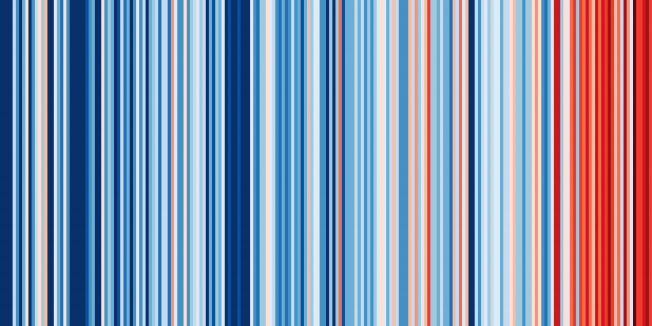Grand European and Asian-Pacific multi-model seasonal forecasts: maximization of skill and of potential economical value to end-users
Climate Dynamics (2017) 1-20
Abstract:
© 2017 Springer-Verlag GmbH Germany Multi-model ensembles (MMEs) are powerful tools in dynamical climate prediction as they account for the overconfidence and the uncertainties related to single-model ensembles. Previous works suggested that the potential benefit that can be expected by using a MME amplifies with the increase of the independence of the contributing Seasonal Prediction Systems. In this work we combine the two MME Seasonal Prediction Systems (SPSs) independently developed by the European (ENSEMBLES) and by the Asian-Pacific (APCC/CliPAS) communities. To this aim, all the possible multi-model combinations obtained by putting together the 5 models from ENSEMBLES and the 11 models from APCC/CliPAS have been evaluated. The grand ENSEMBLES-APCC/CliPAS MME enhances significantly the skill in predicting 2m temperature and precipitation compared to previous estimates from the contributing MMEs. Our results show that, in general, the better combinations of SPSs are obtained by mixing ENSEMBLES and APCC/CliPAS models and that only a limited number of SPSs is required to obtain the maximum performance. The number and selection of models that perform better is usually different depending on the region/phenomenon under consideration so that all models are useful in some cases. It is shown that the incremental performance contribution tends to be higher when adding one model from ENSEMBLES to APCC/CliPAS MMEs and vice versa, confirming that the benefit of using MMEs amplifies with the increase of the independence the contributing models. To verify the above results for a real world application, the Grand ENSEMBLES-APCC/CliPAS MME is used to predict retrospective energy demand over Italy as provided by TERNA (Italian Transmission System Operator) for the period 1990–2007. The results demonstrate the useful application of MME seasonal predictions for energy demand forecasting over Italy. It is shown a significant enhancement of the potential economic value of forecasting energy demand when using the better combinations from the Grand MME by comparison to the maximum value obtained from the better combinations of each of the two contributing MMEs. The above results demonstrate for the first time the potential of the Grand MME to significantly contribute in obtaining useful predictions at the seasonal time-scale.Variability in seasonal forecast skill of Northern Hemisphere winters over the twentieth century
Geophysical Research Letters American Geophysical Union (AGU) (2017)
Abstract:
©2017. American Geophysical Union. All Rights Reserved. Seasonal hindcast experiments, using prescribed sea surface temperatures (SSTs), are analyzed for Northern Hemisphere winters from 1900 to 2010. Ensemble mean Pacific/North American index (PNA) skill varies dramatically, dropping toward zero during the mid-twentieth century, with similar variability in North Atlantic Oscillation (NAO) hindcast skill. The PNA skill closely follows the correlation between the observed PNA index and tropical Pacific SST anomalies. During the mid-century period the PNA and NAO hindcast errors are closely related. The drop in PNA predictability is due to mid-century negative PNA events, which were not forced in a predictable manner by tropical Pacific SST anomalies. Overall, negative PNA events are less predictable and seem likely to arise more from internal atmospheric variability than positive PNA events. Our results suggest that seasonal forecasting systems assessed over the recent 30 year period may be less skillful in periods, such as the mid-twentieth century, with relatively weak forcing from tropical Pacific SST anomalies.The impact of stochastic physics on tropical rainfall variability in global climate models on daily to weekly time scales
Journal of Geophysical Research: Atmospheres American Geophysical Union 122:11 (2017) 5738-5762
Abstract:
Many global atmospheric models have too little precipitation variability in the tropics on daily to weekly time scales, and also poor representation of tropical precipitation extremes associated with intense convection. Stochastic parameterisations have the potential to mitigate this problem by representing unpredictable subgrid variability that is left out of deterministic models. We evaluate the impact on the statistics of tropical rainfall of two stochastic schemes, the stochastically perturbed parameterization tendency scheme (SPPT) and stochastic kinetic energy backscatter scheme (SKEBS), in three climate models: EC-Earth, the Met Office Unified Model and the Community Atmosphere Model, version 4 (CAM4). The schemes generally improve the statistics of simulated tropical rainfall variability, particularly by increasing the frequency of heavy rainfall events, reducing its persistence and increasing the high-frequency component of its variability. There is a large range in the size of the impact between models, with EC-Earth showing the largest improvements. The improvements are greater than those obtained by increasing horizontal resolution to ∼20km. Stochastic physics also strongly affects projections of future changes in the frequency of extreme tropical rainfall in EC-Earth. This indicates that small-scale variability that is unresolved and unpredictable in these models has an important role in determining tropical climate variability statistics. Using these schemes, and improved schemes currently under development, is therefore likely to be important for producing good simulations of tropical variability and extremes in the present day and future.Can bias correction and statistical downscaling methods improve the skill of seasonal precipitation forecasts?
Climate Dynamics Springer Verlag 50:3-4 (2017) 1161-1176
Abstract:
Statistical downscaling methods are popular post-processing tools which are widely used in many sectors to adapt the coarse-resolution biased outputs from global climate simulations to the regional-to-local scale typically required by users. They range from simple and pragmatic Bias Correction (BC) methods, which directly adjust the model outputs of interest (e.g. precipitation) according to the available local observations, to more complex Perfect Prognosis (PP) ones, which indirectly derive local predictions (e.g. precipitation) from appropriate upper-air large-scale model variables (predictors). Statistical downscaling methods have been extensively used and critically assessed in climate change applications; however, their advantages and limitations in seasonal forecasting are not well understood yet. In particular, a key problem in this context is whether they serve to improve the forecast quality/skill of raw model outputs beyond the adjustment of their systematic biases. In this paper we analyze this issue by applying two state-of-the-art BC and two PP methods to downscale precipitation from a multimodel seasonal hindcast in a challenging tropical region, the Philippines. To properly assess the potential added value beyond the reduction of model biases, we consider two validation scores which are not sensitive to changes in the mean (correlation and reliability categories). Our results show that, whereas BC methods maintain or worsen the skill of the raw model forecasts, PP methods can yield significant skill improvement (worsening) in cases for which the large-scale predictor variables considered are better (worse) predicted by the model than precipitation. For instance, PP methods are found to increase (decrease) model reliability in nearly 40% of the stations considered in boreal summer (autumn). Therefore, the choice of a convenient downscaling approach (either BC or PP) depends on the region and the season.Climate SPHINX: evaluating the impact of resolution and stochastic physics parameterisations in climate simulations
Geoscientific Model Development European Geosciences Union 10 (2017) 1383-1402



